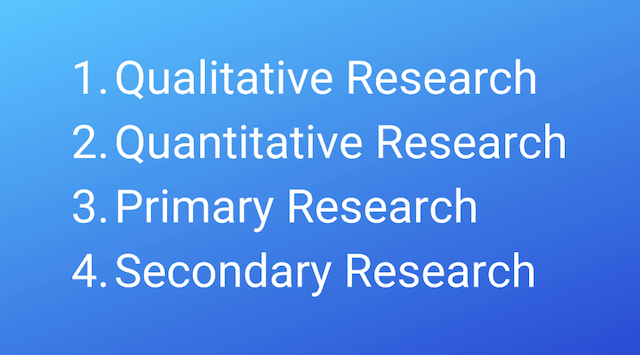
Steven Stromp, author of “Market Research Essentials,” has over 20 years of experience in the field of market research. He’s conducted research for a variety of industries including healthcare, consumer packaged goods, automotive, and higher education.
He is currently the Executive Director of Market Intelligence at Davenport University. In his role, he provides market insights about the higher education landscape to help drive strategic decision making. Stromp also teaches marketing foundations, business research, and market research courses.
He is also responsible for coordinating patient and staff satisfaction research at Spectrum Health, one of the five largest health systems in the nation.
You’ll find Stromp’s five tips for teaching market research below.
1. Nail Down Core Concepts During Week One
I make sure students understand four basic concepts during week one:

These concepts provide a foundation for students as they progress through advanced terms and practices. Consider requiring your students to pass a quiz or assignment on these fundamental concepts to move forward.
Students will be prepared to dive into deeper concepts and techniques and have a reference point for all materials and assignments.
2. Follow the Flow of a Research Project
As a research practitioner, when a client asks me a research question, the first thing I do is seek out low-hanging fruit to answer the question (i.e., secondary data). If secondary research proves insufficient, I move on to primary research – choosing a primary method that can best address the objective, considering the time constraints and budget available. With primary research, the flow is (1) study design, (2) fielding, (3) data analysis, then (4) reporting.

Students should experience this same approach by:
- Learning about and conducting sound secondary research
- Employing qualitative and quantitative primary research techniques
- Conducting proper data analysis and communicating solid strategic implications
3. Use Real-world or Realistic Mock Projects
Have students complete projects that closely resemble a research project they might encounter in the workforce. This provides powerful career preparation and client experience, but it also builds a connection between course material and industry trends.

Mock Projects
When I teach market research in an online accelerated environment, I use a mock project. I have found that new product/service development projects work well. Students conduct competitive secondary research and test product concepts via primary research using a convenience sample of family, friends, and classmates.
Real-world Projects
Brand perception and satisfaction studies tend to work well for real-world projects. Need a client? Try local non-profits. I was able to partner with a local animal rescue to conduct a multitude of projects, including donor perception, volunteer satisfaction, and adoptee satisfaction.
The client interaction provides a valuable experience for students – and non-profits are thrilled with the research they might not otherwise attain.
4. Provide a Strong Focus on Survey Development
Secondary research should be emphasized in the course, particularly to introduce useful market research databases. However, students are typically better versed in conducting and compiling secondary research than primary research because the bulk of students’ experience comes from composing research papers.
Therefore, I spend a large portion of the class teaching proper primary research techniques. I believe survey development is one of the most important factors because surveys are the number one form of primary data collection. Many students come to class feeling that anyone can create a sound survey with widely available tools such as SurveyMonkey. However, upon completing the course, students should realize poor design is possible even with the help of survey tools – poor design impacts data analysis and thus results in the creation of a “garbage in/garbage out” scenario.
Proper survey development takes drafting and requires robust feedback. I recommend dividing survey development into several assignments. Each phase or assignment should incorporate instructor and peer feedback. Students are graded on how instructor comments are incorporated and used to improve the survey.
The separate phases/assignments should be:

To help your students understand how to develop surveys, you can download this assignment on survey development mistakes found in Market Research Essentials. For more resources, request free access to the book here.
5. Train Students to Develop Data-based “Strategic Imperatives”
Students should leave the course understanding that professional environments require high-stakes decisions. Strategic moves need to be supported by data in order to be accepted by company leaders. Collecting and reporting valid data is the first step. The objective goal is to translate those data into strategic actions that meet the overarching goal.
This doesn’t have to be a daunting task. In fact, it can be quite simple. I use a final research report assignment to get students to develop an executive summary. Students must link their recommendations to the data within the summary. Tip: Have students lay out their data point followed by their related strategic imperative. The two can be separated into a data summary and a strategic imperative section later. For example:
Data Point
The average price consumers expect to pay for a drone. Concept B is $821.50.
Strategic Imperative
It is recommended a consumer drone developed with features similar to Concept B should be priced in the $800 range.
For More Tips on Teaching Market Research…
Request free instructor access to “Market Research Essentials.”
Stromp wrote “Market Research Essentials” to bring the real world of research into the classroom. It takes an in-depth look at each step in the market research process. Students will get a clear understanding of how to conduct primary and secondary research, how to analyze the data, and much more.






